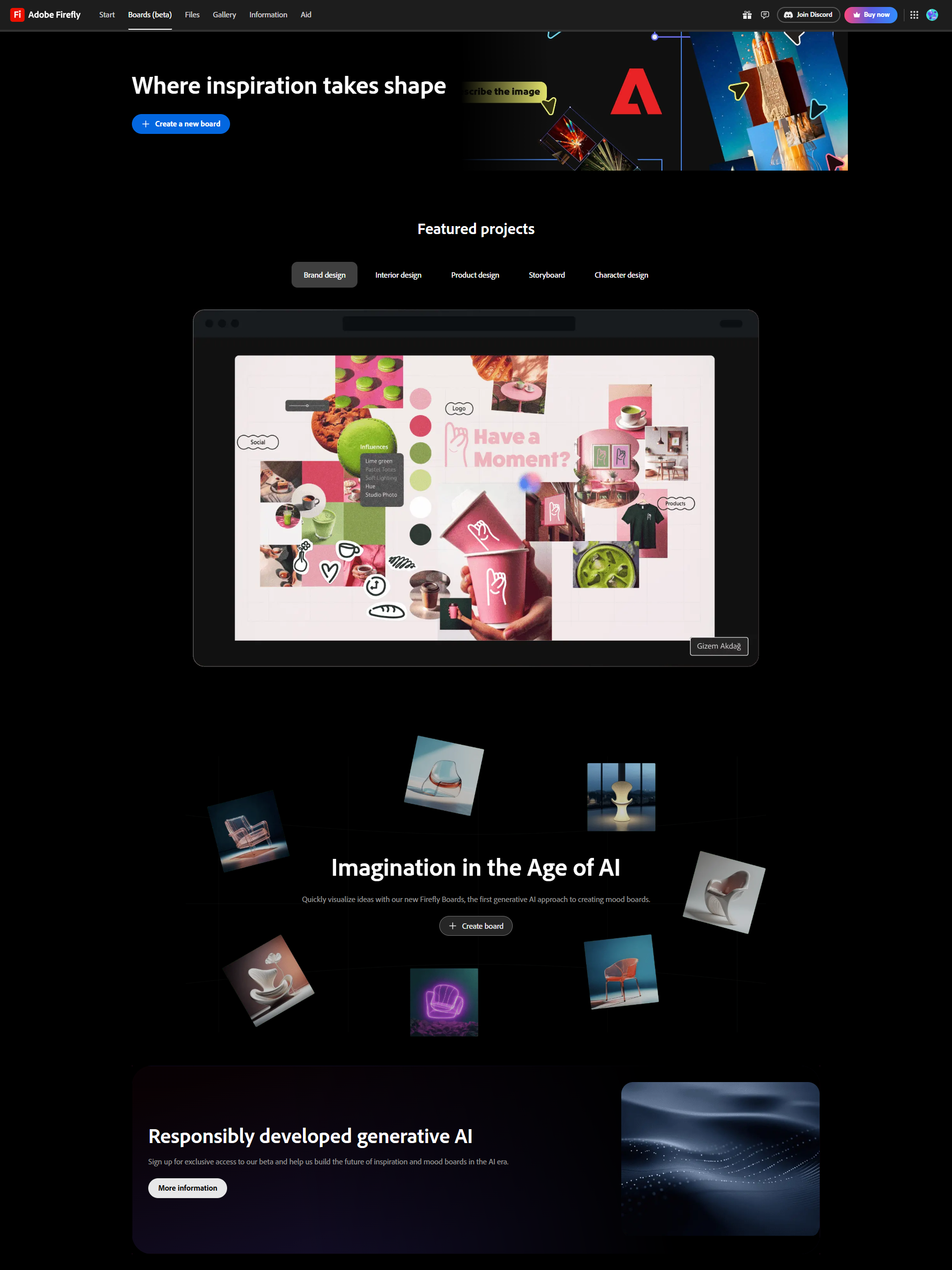
Adobe Firefly Enterprise: Complete Buyer's Guide
Enterprise-grade generative AI that accelerates content creation while maintaining brand integrity through commercially safe, custom-trained models integrated directly into Creative Cloud workflows.
Adobe Firefly Enterprise is the enterprise-grade generative AI platform designed for large organizations requiring brand-safe content creation at scale within established Creative Cloud workflows.
Market Position & Maturity
Market Standing
Adobe Firefly Enterprise occupies a dominant position in the enterprise generative AI design market, leveraging Adobe's established Creative Cloud ecosystem and decades of enterprise software experience.
Company Maturity
Adobe benefits from $19.4 billion annual revenue and 26 million Creative Cloud subscribers, providing unmatched market stability and long-term viability compared to venture-funded AI startups[43].
Industry Recognition
Adobe's position as a Gartner Magic Quadrant Leader in Content Services Platforms and recognition as a Forrester Wave Leader in Digital Asset Management, combined with ISO 27001 certification and SOC 2 Type II compliance, provide enterprise buyers with confidence in vendor stability and security practices[43].
Strategic Partnerships
Strategic partnerships enhance Adobe's market position through integrations with Microsoft Teams, Slack, and major marketing automation platforms. The Adobe Partner Program includes over 15,000 solution partners globally[43].
Longevity Assessment
Long-term viability assessment strongly favors Adobe based on financial stability, market position, and strategic focus. The company's $4.2 billion R&D investment and dedicated AI research teams ensure continued innovation and platform development[43].
Proof of Capabilities
Customer Evidence
IBM's comprehensive deployment serves as a primary validation case, with 20,000 users achieving 40% faster campaign ideation and 30% reduction in photoshoot costs through a structured 4-month implementation (March-June 2024)[30].
Quantified Outcomes
Customer implementations consistently demonstrate 40-60% faster hero asset creation and 70-80% faster variant production, with content cost reductions of 25-50%[18][19][29].
Market Validation
Adobe reports that Fortune 500 companies have deployed Firefly Enterprise for commercially safe asset generation, though specific customer counts require direct Adobe consultation[4][18][22].
Competitive Wins
Enterprises consistently choose Adobe Firefly Enterprise over alternatives when Creative Cloud integration, commercial safety, and custom model training are primary requirements.
Reference Customers
Reference customer industries span technology (IBM), healthcare (EVERSANA), media (ZDF Digital), and manufacturing sectors[30][50].
AI Technology
Adobe Firefly Enterprise employs commercially safe generative AI models trained exclusively on licensed content, Adobe Stock imagery, and public domain materials, eliminating intellectual property risks that plague competitors using web-scraped training data[49][54].
Architecture
The platform's Custom Model Training architecture enables enterprises to develop proprietary AI models using brand-specific assets, with documented training completion in under 48 hours for enterprise-scale deployments[55][59]. This capability leverages Adobe's Sensei AI infrastructure combined with cloud-based GPU acceleration to process thousands of brand assets into custom generative models.
Primary Competitors
ChatGPT, Midjourney, Microsoft Designer, and Canva Enterprise[3][11][14][4].
Competitive Advantages
Adobe's competitive advantage stems from Creative Cloud integration, commercial safety guarantees, and Custom Model training capabilities that standalone alternatives cannot match[43][51][52][55][59][49][54].
Market Positioning
Adobe positions Firefly Enterprise as comprehensive AI infrastructure for design-intensive organizations, justifying premium pricing and complex implementations through long-term competitive advantages.
Win/Loss Scenarios
Choose Adobe Firefly Enterprise when Creative teams operate within Creative Cloud ecosystems, brand consistency and commercial safety are primary requirements, custom model training capabilities justify implementation complexity, and enterprise-scale deployment with comprehensive governance is needed.
Key Features

Pros & Cons
Use Cases
Integrations
Featured In Articles
Comprehensive analysis of AI Design Inspiration Tools for AI Design for AI Design professionals. Expert evaluation of features, pricing, and implementation.
How We Researched This Guide
About This Guide: This comprehensive analysis is based on extensive competitive intelligence and real-world implementation data from leading AI vendors. StayModern updates this guide quarterly to reflect market developments and vendor performance changes.
60+ verified sources per analysis including official documentation, customer reviews, analyst reports, and industry publications.
- • Vendor documentation & whitepapers
- • Customer testimonials & case studies
- • Third-party analyst assessments
- • Industry benchmarking reports
Standardized assessment framework across 8 key dimensions for objective comparison.
- • Technology capabilities & architecture
- • Market position & customer evidence
- • Implementation experience & support
- • Pricing value & competitive position
Research is refreshed every 90 days to capture market changes and new vendor capabilities.
- • New product releases & features
- • Market positioning changes
- • Customer feedback integration
- • Competitive landscape shifts
Every claim is source-linked with direct citations to original materials for verification.
- • Clickable citation links
- • Original source attribution
- • Date stamps for currency
- • Quality score validation
Analysis follows systematic research protocols with consistent evaluation frameworks.
- • Standardized assessment criteria
- • Multi-source verification process
- • Consistent evaluation methodology
- • Quality assurance protocols
Buyer-focused analysis with transparent methodology and factual accuracy commitment.
- • Objective comparative analysis
- • Transparent research methodology
- • Factual accuracy commitment
- • Continuous quality improvement
Quality Commitment: If you find any inaccuracies in our analysis on this page, please contact us at research@staymodern.ai. We're committed to maintaining the highest standards of research integrity and will investigate and correct any issues promptly.